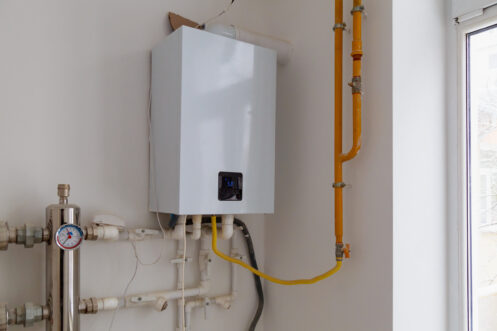Ways to Prolong the Lifespan of Your Home's Hot Water System By MaintenanceHow to Extend the Lifespan of Your Home's Hot Water System By Maintenance
Ways to Prolong the Lifespan of Your Home's Hot Water System By MaintenanceHow to Extend the Lifespan of Your Home's Hot Water System By Maintenance
Blog Article
The author is making several good pointers relating to Water Heater Maintenance Tips You Can't Afford to Forget overall in this post down below.

Hot water is essential for day-to-day comfort, whether it's for a refreshing shower or washing recipes. To ensure your warm water system runs effectively and lasts longer, routine maintenance is key. This post offers sensible suggestions and understandings on how to keep your home's hot water system to stay clear of disruptions and expensive repairs.
Intro
Maintaining your home's warm water system might appear complicated, but with a couple of basic actions, you can ensure it runs efficiently for years ahead. This guide covers everything from recognizing your warm water system to do it yourself maintenance ideas and knowing when to contact specialist help.
Value of Maintaining Your Hot Water System
Routine upkeep not only prolongs the life-span of your warm water system but likewise guarantees it operates effectively. Ignoring upkeep can lead to decreased effectiveness, greater power bills, and even premature failing of the system.
Indicators Your Hot Water System Demands Upkeep
Recognizing when your warm water system requires focus can protect against significant issues. Look out for signs such as inconsistent water temperature, unusual sounds from the heater, or rusty water.
Recognizing Your Warm Water System
Prior to diving into maintenance tasks, it's useful to comprehend the fundamental elements of your hot water system. Generally, this includes the water heater itself, pipes, anode poles, and temperature level controls.
Regular Monthly Maintenance Tasks
Normal month-to-month checks can assist catch minor issues before they rise.
Purging the Hot Water Heater
Purging your water heater removes sediment buildup, boosting performance and extending its life.
Checking and Changing Anode Rods
Anode poles stop rust inside the tank. Evaluating and replacing them when worn out is crucial.
Evaluating and Changing Temperature Level Settings
Adjusting the temperature level setups makes sure optimal performance and safety and security.
Do It Yourself Tips for Maintenance
You can perform numerous maintenance tasks on your own to keep your hot water system in top problem.
Checking for Leaks
Consistently examine pipes and links for leaks, as these can lead to water damages and higher bills.
Examining Stress Alleviation Valves
Evaluating the stress safety valve ensures it operates properly and prevents too much pressure build-up.
Protecting Pipelines
Protecting hot water pipelines decreases heat loss and can save power.
When to Call an Expert
While DIY upkeep is advantageous, some problems require expert know-how.
Complicated Concerns Needing Specialist Help
Instances consist of major leaks, electric problems, or if your hot water heater is regularly underperforming.
Regular Professional Maintenance Conveniences
Specialist upkeep can consist of extensive inspections, tune-ups, and guaranteeing conformity with safety criteria.
Verdict
Regular upkeep of your home's warm water system is vital for performance, longevity, and expense financial savings. By following these suggestions and understanding when to look for professional assistance, you can make sure a reliable supply of hot water without unforeseen disturbances.
Water Heater Maintenance Tips
Test the TPR Valve
Shut off the power and the cold-water supply valve. Place a bucket under the pipe connected to the temperature-pressure-release (TPR) valve on the top or side of the tank. (This valve opens if the tank pressure gets too high.) Lift the valve’s tab to let some water out, then let go. If water keeps flowing, drain the tank partway, unscrew the old valve with a pipe wrench, and install a new one. Check the Anode Rod
Put a hose to the tank’s drain cock and let out a few gallons of water. Now fit a 1 1/16-inch socket onto the rod’s hex head on top of the heater (or under its top plate) and unscrew the rod. If it’s less than ½ inch thick or coated with calcium, buy a new one, wrap its threads with Teflon tape, put it back in the tank, and tighten securely. Use this segmented rod if headroom above the tank is limited. Drain the Tank and Wash Out Sediment
Drain the remaining water in the tank into the bucket, then stir up the sediment on the tank’s bottom by briefly opening the cold-water supply valve. Drain and repeat until clean water comes out of the hose. Close the drain cock, refill the tank, and turn its power back on. Adjust the Temperature
Find the temperature dial on the side of the tank and unscrew its cover. Adjust the dial to 120 degrees using a flathead screwdriver. For every 10 degrees the temperature is lowered, you can expect to save up to 5 percent in energy costs. Turn the water heater off or the thermostat down to its lowest setting if you plan to be away from home for more than three days. Insulate the Pipes
Buy some self-sticking 3/8-inch-thick foam pipe insulation that matches the pipes’ diameter. Slide the foam over the hot-and cold-water pipes as far as you can reach. Insulating the cold-water pipe prevents condensation in summer. Peel the tape and squeeze the insulation closed. If the pipe is 6 inches or less from the flue, cover it with 1-inch-thick unfaced fiberglass pipe wrap. https://www.thisoldhouse.com/plumbing/21016402/how-to-maintain-a-water-heater

I was shown that write-up on How to Maintain Your Water Heater & Prolong its Life through a pal on our other web blog. So long as you enjoyed our page if you please make sure you remember to share it. We enjoy reading our article about Tips For Maintaining Your Hot Water Heater.
Call Today Report this page